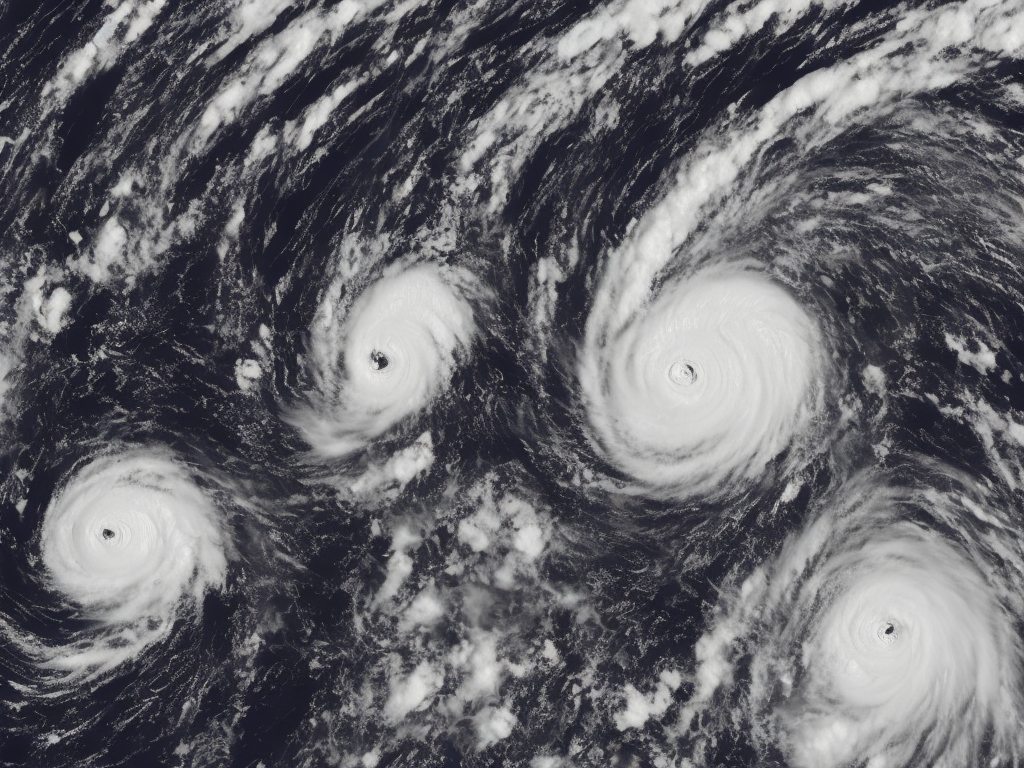
Difference Between A Hurricane And A Typhoon
Natural disasters like hurricanes and typhoons can wreak havoc on coastal regions, causing widespread damage and loss of life. While hurricanes and typhoons are both powerful tropical cyclones, they differ in their location and naming conventions.
To fully understand the difference between a hurricane and a typhoon, we need to dive into their characteristics and origins. Understanding their distinctions can help us comprehend the specific risks posed by each and the ways in which people living in affected areas can prepare and react.
A hurricane and a typhoon are meteorological terms employed to classify tropical cyclones based on their geographical location. The terms are used interchangeably but are specific to different regions. A hurricane is the term used to describe a tropical cyclone that occurs in the Atlantic Ocean and the Northeast Pacific Ocean east of the International Date Line. On the other hand, a typhoon is the term for a tropical cyclone that forms in the Northwest Pacific Ocean west of the International Date Line.
Tropical cyclones are massive and intense low-pressure systems that derive their power from warm ocean waters and atmospheric conditions. These cyclones share some common features, but there are notable differences that set hurricanes and typhoons apart.
Firstly, hurricanes and typhoons differ in terms of their size and overall weather pattern. Typhoons are usually larger in size and span a greater diameter. Due to their larger size, typhoons can cover a broader area, impacting multiple countries and causing extensive damage. On the other hand, hurricanes tend to be more compact and localized, focusing their fury on a narrower strip of coastal regions.
Another difference is the intensity and wind speed of the storms. Typhoons generally achieve higher wind speeds compared to hurricanes, making them potentially more destructive. The Pacific Ocean's warm waters contribute to the strength of typhoons, allowing them to gather more energy and intensify. Super Typhoon Haiyan, which struck the Philippines in 2013, is a terrifying example of a typhoon reaching unprecedented wind speeds of 195 mph (313 km/h), making it one of the strongest storms ever recorded. Although hurricanes can also reach high wind speeds, they typically fall slightly lower on the intensity scale.
Furthermore, hurricanes and typhoons have different impacts on the communities and countries they affect. Due to the varied geographical locations, they often strike different regions with varying vulnerabilities and levels of preparedness. Those in hurricane-prone areas tend to have more experience and infrastructure in place to withstand the impacts of these storms. For instance, coastal areas of the United States are well-prepared and have sophisticated warning systems and evacuation plans in place. However, countries frequently affected by typhoons, such as the Philippines or Japan, may face more challenges due to factors like dense populations, mountainous terrain, and limited resources. These factors contribute to the higher risks and devastation caused by typhoons in these regions.
The naming conventions of hurricanes and typhoons also differ. The World Meteorological Organization (WMO) is responsible for officially naming tropical cyclones. In the Atlantic and Northeast Pacific, hurricanes are given specific names that alternate between masculine and feminine names. The names are predetermined and are rotated on a six-year cycle. However, as a result of particularly destructive hurricanes, those names may be retired and replaced with new ones. In contrast, typhoons in the Northwest Pacific are not given individual names. Instead, the Japan Meteorological Agency assigns them numbers according to their order of occurrence in a given year. If a typhoon causes significant damage or loss of life, its name may be retired, similar to the hurricane naming convention.
The tracks of hurricanes and typhoons can also differ due to the influence of the prevailing winds. In the Atlantic, most hurricanes follow a westward track, moving towards the Caribbean, Gulf Coast, or East Coast of the United States. However, some hurricanes may curve northwards or northeastwards, affecting regions like Bermuda or Eastern Canada. Conversely, typhoons in the Northwest Pacific generally move westward, threatening many countries in Southeast Asia, including the Philippines, Taiwan, and China. However, some typhoons can recurve towards the north, affecting regions like Japan or the Korean Peninsula.
In conclusion, while hurricanes and typhoons are both large and powerful tropical cyclones, there are several key differences that set them apart. These differences include their geographical location, size, wind speeds, impacts, naming conventions, and tracks. Understanding these distinctions can help forecasters, emergency management officials, and communities better prepare and respond to these devastating natural disasters. By staying informed and taking the necessary precautions, we can minimize the risks and impacts associated with these extreme weather events, ensuring the safety and resilience of coastal communities.
 Self-Instruct
Self-Instruct